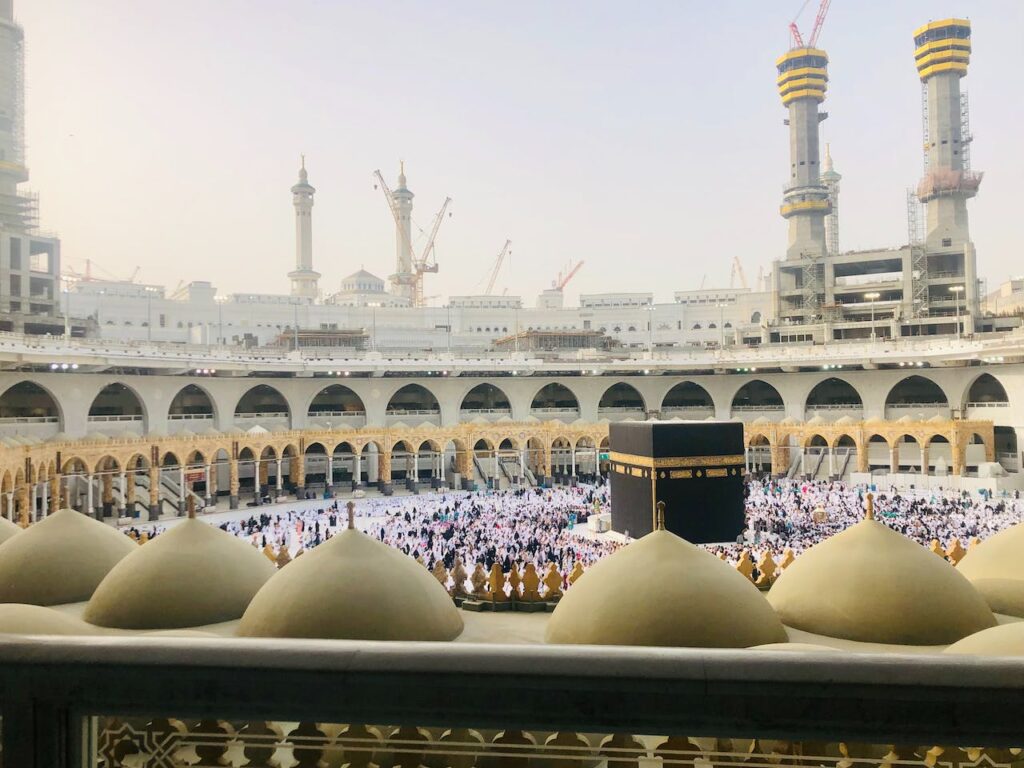The difference between Hajj and Umrah is significant; in terms of conditions, by definition, its rule, and others.
Difference Between Hajj and Umrah
Firstly, we will talk about the difference in definition, rule, reward, and time as follows:
Hajj
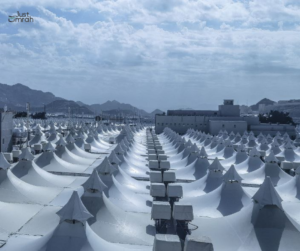
Hajj is the intention of visiting the Kaaba to perform specific actions in a specific place at a specific time.
- Rule: Hajj is one of the five pillars of Islam, It is obligatory for every able-bodied Muslim man and woman once in a lifetime.
- Reward: Hajj is one of the best acts of worship to Allah, gaining paradise and forgiving sins.
- Time: Hajj is performed in the sacred months; Shawwal, Dhul-Qa’dah, and Dhul-Hijjah.
Umrah
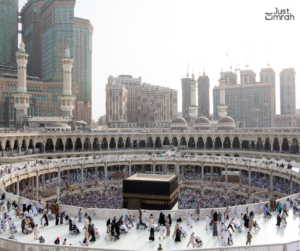
Umrah is a visit to Kaaba to perform specific actions in a specific place.
- Rule: The opinions of the four imams on the ruling on Umrah are numerous, and the following is a statement of the opinions of each:
- Hanafis and Malikis: Umrah is considered a sure sunnah for a Muslim once in a lifetime.
- While Shafi’is and Hanbalis say Umrah is an individual obligation upon every Muslim man and woman once in a lifetime.
- Reward: The Umrah helps expiate sins, but the Umrah in Ramadan is equivalent to the Hajj.
- Time: Umrah is performed at any time of the year.
Difference Between Hajj and Umrah | Terms of Condition
There are no differences between Hajj and Umrah in terms of conditions, both acts require the same conditions, which are:
Islam
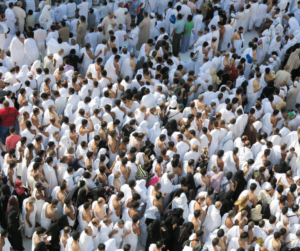
This condition is a condition for the validity of Hajj and Umrah, As both acts of worship are not valid for a non-Muslim.
Mind and this condition are conditions of validity, As the worship of Hajj and Umrah is not valid from the insane.
Puberty
The condition of puberty is considered a condition for parts that are not valid; Where the worship of Hajj and Umrah is valid for the boy\ Girl, but it is not Wajib for him, and he\ she must perform the Hajj again after reaches puberty,
Ability
A pilgrim performing Hajj or Umrah must meet some conditions to be called able, for example:
- That his body be free from diseases that may hinder him from performing Hajj and Umrah.
- That he has enough money and provision to perform his Hajj or Umrah until he returns.
- To secure himself and his money during the road and the time performing the rituals.
- The woman is accompanied by a mahram or husband.
Note that the condition of Mahram according to the Ministry of Hajj and Umrah has been abolished since 2022
The difference between Hajj and Umrah | Rituals
Secondly, there is a difference between the rituals of Hajj and Umrah, as follows:
Umrah Rituals
The Umrah has four rituals, which we will mention as follows:
- Ihram: is the intention to enter into the rituals of Umrah and one of its conditions is that
- The man washes and perfumes himself, and wears clean white unstitched clothes.
- The woman has the right to wash if she is menstruating or postpartum, and to wear covering clothing.
- Tawaf: is the circumambulation around the Kaaba, where the Muslims circumambulate 7 circuits.
- Sa’i between Safa and Marwah: comes after entering the state of ihram and circumambulating the Kaaba.
- Shaving or shortening: It is shaving or shortening the hair to get out of the state of Ihram.
Hajj Rituals
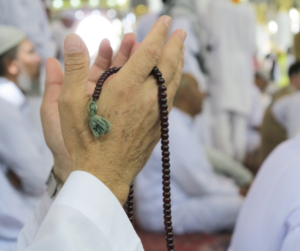
The concept of the rituals or the pillar is what the Hajj cannot be completed without.
In other words, whoever leaves it intentionally or inattentively, his Hajj is incomplete, and the same applies to the Umrah, and Hajj rituals are:
- Ihram: Ihram is considered the basis at the beginning of Hajj, as it is the first pillar and ritual in them.
Know More about Ihram
- Standing in Arafah: where standing is from the dawn of the day of Arafah until the dawn of the day of sacrifice.
- Tawaf al-Ifadah: The time for tawaf al-Ifadah starts from half the night of sacrifice for those who stood in Arafah, and there is no specific limit for its end, but doing it on the day of sacrifice is better.
Moreover, is called the circumambulation of al-Ifadah because the pilgrim performs it when he breaks out from Mina to Mecca.
- Sa’y between Safa and Marwah: It is the ritual or the fourth pillar of the Hajj.
- Shaving or shortening: It is shortening or shaving the hair to get out of the state of Ihram
In conclusion,
Both Hajj and Umrah have a great reward from Allag, and their reward is Paradise.
And whenever you can perform any of them, perform it, and do not hesitate



